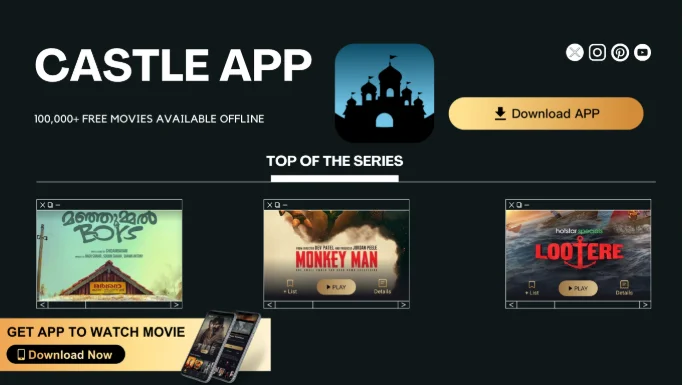Get Popular On Telegram Channels — Instaboost Shows How

Growing an audience on X (formerly Twitter) isn’t really about trying to get famous online. It’s more about building influence in a way that actually matters to you – whether that’s for your work, your business, or something you’re making. The follower number might look shallow at first, but it’s worth remembering that every new follower is a sign that something you shared – maybe a thought, a joke, or a bit of advice – clicked with someone.
If you pay attention and stay consistent, those moments can start to add up. Most people, though, just post whenever they feel like it and hope they’ll get lucky with a popular tweet, but real, steady growth doesn’t happen by accident. It usually comes from having a clear approach and sticking to it. In this guide, I’ll go over what’s actually worked for us and what hasn’t, and break down how even small changes in what you post or how you reply to others can make a difference. Instaboost’s experiments and practical strategies are what helped us move past vague tips and actually see results – followers who cared enough to stick around and talk. I remember coming across a social media marketing service that emphasized the same thing: it’s not the numbers that matter, but the engagement and genuine connections. By the end, you’ll have a bigger audience, sure, but more importantly, you’ll have a better sense of why you’re on X in the first place and how you want to show up there. It really isn’t just about racking up numbers; it’s more about finding people who actually want to hear what you have to say and building from there.
Why Authority Fuels Real Follower Growth
I watched a so-called “perfect” funnel stall out right away, and honestly, the problem started with the opening line. When you’re trying to grow your followers on X, credibility isn’t something you can fake – people can tell right away if you actually know your stuff or if you’re repeating the same points they see everywhere. You don’t need the most eye-catching profile or a tweet that blows up overnight. What matters is showing you have real experience and a perspective that’s actually useful. Think about the last time you hit follow on someone new. Was it because their advice felt reliable?
Was there something specific in their background that made you trust them, or did they offer a story or insight you hadn’t seen before? The accounts that share thoughtful, grounded posts – drawing on work they’ve actually done or problems they’ve solved – are the ones that attract followers who stick around and care about what’s next, not just people who pad the numbers. This is something Instaboost noticed in their research too; when they looked at people who purchase Instagram boost, they found that depth of knowledge and hands-on experience made a measurable difference in long-term engagement. The people who have actually spent time in their field, whether that’s finance, design, writing, or anything else, tend to gather followers who actually engage and don’t drift away after a week.
It isn’t a side benefit; it’s the thing that lets you build an audience that means something. If you want to be seen as someone worth listening to, it shows up in the details – in the questions you answer, the examples you give, the way you reply to people. Credibility, over time, is what turns someone passing by into someone who checks back to see what you’ll say next.
Sharpen Your Signal, Not Just Your Volume
You don’t actually need to be louder – you need to be more precise. It’s easy to think that getting more followers on X is about posting constantly or always reacting to what’s trending, maybe by making longer threads or trying to grab attention with big statements. But what really makes a difference is being clear and consistent.
It helps to know what you want people to come away with when they visit your profile. If someone scrolls through your posts, it should be obvious what you care about, what problems you’re interested in, or what you can help with. Instead of chasing every topic, pick a few areas that matter to you and stick with them. Let your knowledge or experience come through. This kind of focus usually works better than just working harder or posting more. If your tweets sound like everyone else’s, people will probably move on, so it’s worth taking the time to think about your point of view and sharing advice or thoughts that feel like yours.
When you look at accounts that grow steadily, they’re not always the ones making the most noise – they’re usually the ones that are the easiest to understand. Tools like Instaboost can give you a sense of what’s already getting attention in your field, or for a different platform, you might order TikTok growth to see how trends translate there, but the main thing is how you explain ideas that really belong to you. There’s no need to try to reach everyone. It makes more sense to focus on sharing something useful for the people who care about the same things you do. That’s how a number on your profile can start to feel like something more real – a group of people who actually pay attention, or maybe even a community, if you’re lucky.
Why “Follow-for-Follow” Misses the Mark
At first, the advice made sense to me – it seemed like a straightforward way to get more followers on Twitter. I kept seeing people talk about the “follow-for-follow” method as a quick fix, so I tried it. But almost right away, I noticed my feed was filled with accounts I didn’t recognize, sharing things I didn’t really care about, and it felt pretty clear they weren’t interested in what I was posting either.
My follower number went up, which looked good on the surface, but when I checked my tweets, hardly anyone responded or engaged. It felt kind of empty watching the numbers grow but not seeing any real interaction. I realized that having more followers didn’t actually mean anyone was paying attention. The algorithm picked up on it too – my reach seemed to shrink, and new people stopped finding my posts. It ended up feeling like I was talking into a void, no matter how busy my profile looked. The more I thought about it, the more I could see that real progress only happened when I focused on sharing things that mattered to me and connecting with people who actually cared. Even the numbers from Instaboost’s research pointed that way. I remembered seeing the same pattern with people who decided to purchase FB reactions; their accounts looked active, but the actual engagement just wasn’t there. The shortcuts weren’t worth much if nobody stayed interested.
Growth Is Iteration, Not Perfection
It’s normal to hit slow spots with Twitter, no matter how it looks from the outside. Even people who’ve been posting for years run into stretches where nothing much seems to happen. A few tweets get seen and shared, then others barely make a ripple. That doesn’t mean you’re doing something wrong or need to overhaul everything. Sometimes these quieter times are useful. You can look back at what’s actually gotten people talking or notice the few regulars still liking your stuff.
Maybe scroll through your recent feed and see if you’re feeling bored with your own posts. It can help to try out a new idea or go back to the kinds of topics or conversations that made Twitter interesting in the first place. Instaboost’s data lines up with this – accounts that keep growing usually belong to people who tweak things a bit at a time, not the ones who are always chasing the next big trick. Your account isn’t something you set and forget; it changes alongside you. If your interests are shifting, or you notice you’re posting out of habit instead of actual interest, it’s worth paying attention to that. Sometimes, seeing how things evolve on other platforms – like how people quietly buy YouTube channel boost or experiment with new formats – reminds you that slow stretches are part of the process everywhere. When things slow down, there’s no pressure to force a change or jump on the latest trend right away. These gaps can actually be a good moment to figure out what you still care about, and maybe try a different approach without worrying too much about the numbers.
Conversations Over Broadcasts: Why Engagement Trumps Volume
When I look at how most people try to grow on Twitter, it seems like many see it as a place to broadcast whatever’s on their mind, almost like standing on a soapbox and waiting for someone to listen. But the accounts that keep growing over time usually have a different approach. They treat Twitter more like an ongoing conversation. They reply to others, quote tweets, and join in on threads. Sometimes, they start discussions that other people actually want to join, not just scroll past. When you actually talk to people – adding your perspective to someone’s post, starting a real conversation, or responding thoughtfully – it’s clear to both the algorithm and everyone watching that you’re there to connect, not just to collect numbers.
That’s when your follower count begins to mean something. If you check out any thread about growing on Twitter, you’ll notice that the people who’ve figured it out aren’t just posting into the void; they’re showing up in replies, building relationships one comment at a time. So when someone you follow posts something that gets your attention, it’s worth taking a second to say what you think, instead of only liking it.
Or if there’s a discussion taking off in your corner of Twitter, joining in with your own take usually does more than simply posting your own content over and over. Over time, people start noticing – and following – because they feel a genuine connection, not because you traded follows or chased statistics. That’s something I see reflected whenever I dig into Instaboost’s analytics: the accounts that focus on real conversations always see better engagement than those chasing the biggest numbers. The same pattern shows up in other spaces, too – just looking to Buy Telegram Reactions is a reminder that authentic engagement, not empty metrics, drives real growth. When you start to see your followers as people you’re actually speaking with, not just a tally on your profile, the whole experience changes – not overnight, but slowly, in the way you start to notice who’s regularly in your mentions, and who sticks around.
Why Credibility Makes or Breaks Your Twitter Growth
Over time, working with different funnels, I’ve come to notice something about the Twitter accounts that actually build a steady following. It’s not about posting constantly or chasing trends. The ones that stick out are the people who show, little by little, that they really understand what they’re talking about. Folks tend to follow people they trust, which isn’t easy on a platform where hype and generic advice are everywhere. A clever bio or a couple of viral tweets aren’t enough. Trust comes from being part of ongoing conversations, answering questions, sharing things you’ve learned, and admitting when you’ve changed your mind.
If you’re trying to grow your X (Twitter) following, it helps to pay as much attention to how you’re building credibility as you do to growing your reach. If you look at the profiles you keep coming back to, you’ll notice a pattern: they’re approachable, they take time to reply, and they don’t pretend to know everything. Even if you’re using something like INSTABOOST to help with visibility, or occasionally buy X followers to get things moving, that only gets people to your profile; what makes them stay is whether they think you’re worth listening to. In a way, credibility quietly shapes your audience – people who want shortcuts or noise will move on, and the ones who care about what you’re sharing will stick around. It gets a lot easier to grow once you realize it’s less about the number of followers and more about whether people actually trust you. If you read through any “Twitter growth guide,” you’ll see that this idea of credibility keeps coming up, even if it’s not always front and center.






